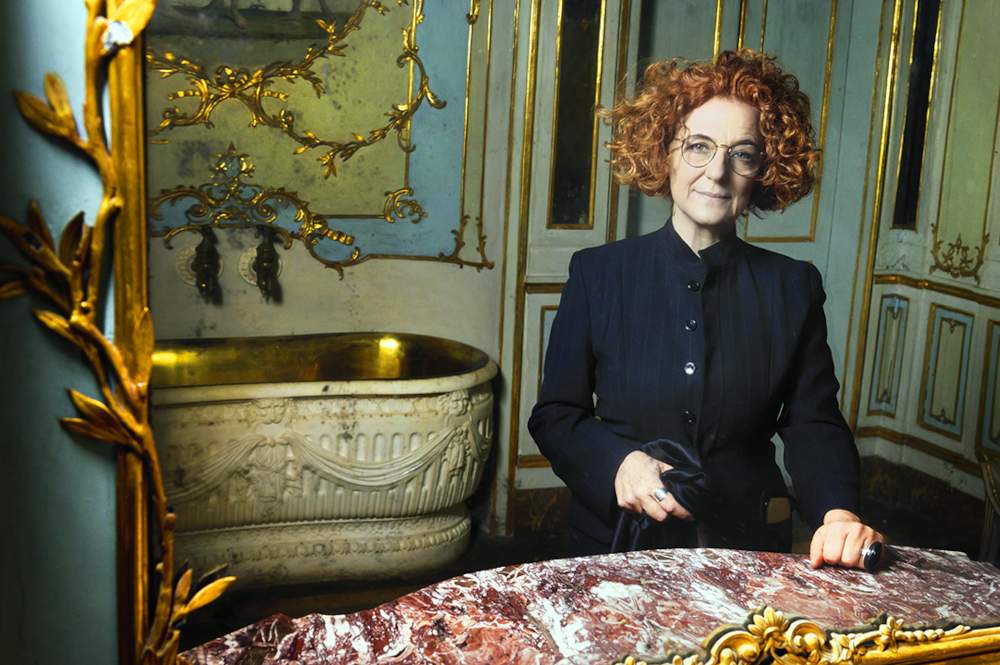Photographic portraits of forty women of art and science on display in Rome
From July 13 to September 10, 2023, the Carlo Bilotti Museum in Rome is hosting Ritratte. Women of Art and Science, a photographic exhibition dedicated to the faces, careers and merits of Italian women who have achieved leading roles in science and cultural heritage.
The exhibition, promoted by Roma Capitale, Assessorato alla Cultura, Sovrintendenza Capitolina ai Beni Culturali, is curated and produced by Fondazione Bracco in collaboration with Arthemisia. Zetema Progetto Cultura museum services. Through the shots of photographer Gerald Bruneau, the exhibition aims to highlight the figure and professional skills of forty women who have reached top positions in their field.
An itinerary of images and words that winds through often hidden places, among vast halls lined with marbles of period buildings and inaccessible research laboratories, to tell the story of these female professionals who not infrequently propose, through their very biography, an inclusive and inspiring model of government.
The exhibition proposes two distinct but complementary exhibition paths, now brought together for the first time in a single exhibition, strongly desired by Fondazione Bracco as part of its intervention to combat gender stereotypes and promote skills, respectively conceived as a priority axis of intervention to achieve equality and the only discriminator for any personal and collective development. Thus, the exhibition ppursuit alternates between stories of women at the helm of Italy’s leading cultural institutions and some of Italy’s most important female scientists, in an ideal union of knowledge between art and science.
On the one hand, the directors of Italian museums, “places sacred to the Muses,” spaces dedicated to the preservation and enhancement of our artistic heritage, but also enterprises with budgets and financial plans. Today at the helm of important Italian cultural institutions are professionals who have reached top positions thanks to multidisciplinary skills, combining a deep knowledge of art history with managerial and creative abilities. It is all the more important to emphasize this achievement in light of available data, which show that throughout the European Union women involved in art and culture generally have less access to creation and production resources, are paid less than men, and are underrepresented in management and decision-making functions, as well as in the art market. On the other, female scientists, with narratives that reinforce even more empowerment and counter gender stereotypes in scientific practice. On display are some of the faces of the larger project called #100esperte (100esperte.it): conceived by thePavia Observatory and theGi.U.Li.A. Association. and developed with Fondazione Bracco thanks to the support of the European Commission’s Representation in Italy, it is an online platform to increase the visibility ofwomen’s expertise, fed over time with profiles of Italian female experts in strategic sectors that still see an underrepresentation of women starting with STEM (science, technology, engineering and mathematics) disciplines.
"At the heart of the Ritratte exhibition, the viewer can observe the vast skills, merit, and intrinsic or acquired qualities that have led these women to take on leading roles, in art and science," stresses Diana Bracco, president of Fondazione Bracco. “In the photographic journey, the protagonists, who normally live secluded work spaces, whether museums or laboratories, are finally the object of collective attention, are recognized in their role. This is the necessary movement we are all invited to make: to recognize skills, to make them visible. For some time with the Bracco Foundation, through the #100experts project and many training initiatives dedicated to women’s empowerment, we have been doing just that: valuing merit and encouraging new vocations, essential levers to support the aspirations of girls and young women, and to achieve an equal presence of women and men in top positions.”
With this in mind, a virtual pathway taken from the exhibition on female directors of Italian museums, enriched with interviews with the protagonists, is now part of the “Art4ART” platform, the project of the Gemelli ART (Advanced Radiation Therapy) Oncology Radiotherapy Center of the Policlinico Universitario A. Gemelli IRCCS. Gemelli ART, in collaboration with the Romanini Association, offers patients the opportunity to enjoy artistic content during cancer therapies. It is indeed scientific evidence that the enjoyment of art, in the broadest sense of the term, creates a favorable environment for patients reduces stress and allows them to cope more effectively with treatment.
Free admission.
Image: Tiziana Maffei, Director of the Reggia di Caserta Museum. Exhibition Portraits. Women of Art and Science. Photo by Gerald Bruneau ©Fondazione Bracco
 |
| Photographic portraits of forty women of art and science on display in Rome |
Warning: the translation into English of the original Italian article was created using automatic tools. We undertake to review all articles, but we do not guarantee the total absence of inaccuracies in the translation due to the program. You can find the original by clicking on the ITA button. If you find any mistake,please contact us.





























